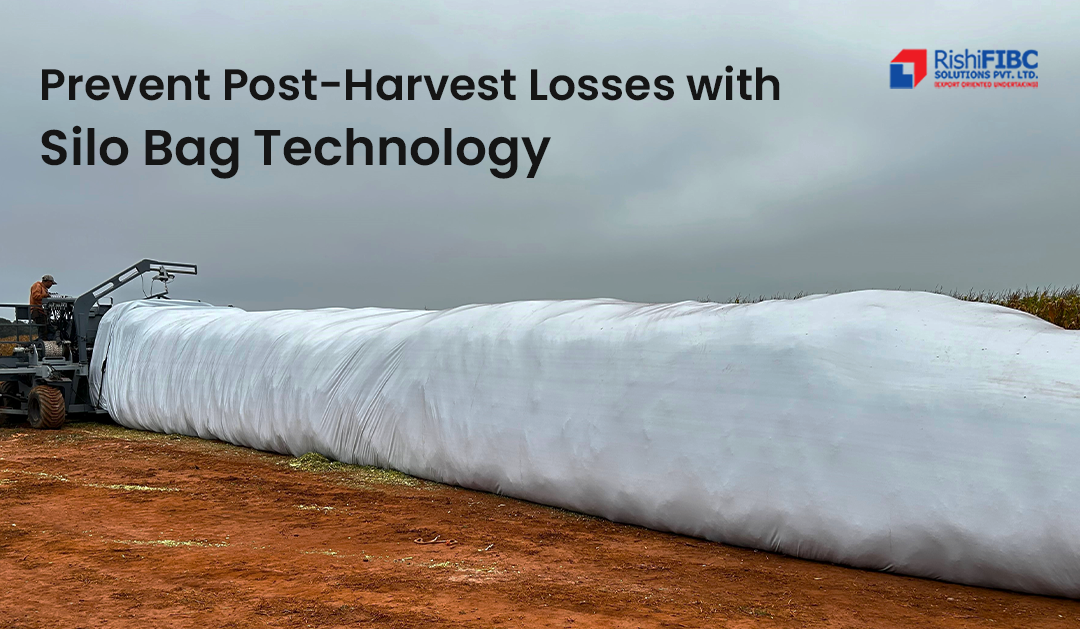How to Maintain Quality and Minimize Losses with Silo Bags
Silo bag technology has revolutionized how farmers and agribusinesses store grains in modern times. In a world where changing weather patterns, pest infestations, and rising storage costs challenge post-harvest management, silo bags for grain storage provide an efficient and cost-effective solution. Whether you are storing corn, wheat, soybeans, or pulses, maintaining grain quality while minimizing losses is essential for profitability. That is where silo bag grain systems become your reliable ally.
Why Silo Bag Technology is Changing the Game?
Conventional grain storage systems, such as godowns or metal silos often demand high infrastructure investments and rigid handling practices. In contrast, silo bag technology offers flexibility, scalability, and mobility. These long polyethylene bags are laid on level ground and filled with harvested grains directly from the field or after cleaning and drying.
By creating a sealed environment with controlled oxygen levels, silo bags reduce the chances of fungal growth, pest infestation, and spoilage. But as effective as they are, correct usage is critical to ensure optimal results.
How to Prepare for Successful Silo Bag Storage
1. Ensure the Right Moisture Content
Before storing, test and adjust the grain’s moisture content to ideal levels:
-
- Corn: ≤ 15%
- Soybeans: ≤ 13%
- Wheat: ≤ 12%
- Corn: ≤ 15%
Excess moisture is the biggest threat to stored grains. It promotes fungal activity and heat build-up, especially inside a sealed silo bag. Always cool grains to ambient temperature before storage to avoid internal condensation.
2. Choose the Right Site
Your storage site can make or break grain preservation. Select a well-drained, firm, and level surface. Avoid areas prone to flooding or water accumulation. Using bags with UV protection helps extend their life when exposed to sunlight for extended periods.
3. Clean Materials and Equipment
Contamination often originates from dirty equipment or residue from previous harvests. Clean the loader, conveyor belts, and inside the bag filler machine thoroughly. Also, ensure that the grains are free from husks, stones, or any foreign matter.
Best Practices During Storage
1. Regular Monitoring
Inspect the bags every few days. Look out for tears, punctures, or signs of rodent activity. Pay close attention to the seams and ends where issues tend to start. Regular inspection helps you take preventive action before minor damage leads to major spoilage.
2. Maintain Airtightness
If any puncture occurs, seal it immediately using recommended repair tapes or sealants. The silo bag for grain storage depends on maintaining low oxygen levels. A leak can lead to the growth of molds, insects, and bacteria.
3. Use CO2 Sensors
Advanced silo bag grain monitoring now includes CO2-based quality checks. A sudden rise in CO2 levels often indicates spoilage due to microbial activity or moisture ingress. This early-warning system can help you take corrective steps before losing the entire batch.
4. Stick to Recommended Storage Durations
Grains stored in silo bags are safe for several months. However, storing beyond the recommended window, especially during warm seasons, increases spoilage risks. Rotate your stock and label each bag with the fill date.
Best Practices During Unloading
1. Controlled Feed-Out
During unloading or feed-out, only remove what you need for the short term; ideally, not more than 2–3 days’ worth of grain. Exposing large volumes to air speeds up deterioration.
2. Maintain a Tight Face
Always keep the feed-out face smooth and tight. Irregular faces trap air and encourage fungal growth. Also, avoid loose grain piles around the bag base.
3. Reseal the Bag After Each Use
Once the required grain is removed, seal the bag back tightly. Even short-term oxygen exposure can ruin the internal microclimate.
Why Rishi FIBC’s Silo Bags Make a Difference
As one of the leading innovators in bulk packaging, Rishi FIBC provides high-performance silo bags that meet global standards. These bags are engineered for durability, resistance to puncture, UV stability, and high sealing efficiency. Whether you are a small farmer or a large exporter, Rishi FIBC’s silo bags ensure your grains are protected during storage and transportation.
The company’s proven silo bag technology allows for scalable solutions that reduce post-harvest losses, enhance shelf life, and lower dependency on fumigation. With fast delivery and customization options, Rishi FIBC has become a trusted name for farmers and agribusinesses alike.
Grain spoilage does not have to be part of your storage cycle anymore. If you are ready to protect your crops, extend shelf life, and eliminate losses caused by poor storage conditions, silo bag grain solutions from Rishi FIBC are your best investment. Connect with our team today and explore how smart grain storage can transform your operations from the ground up.
FAQ
Q1. How long can grains be stored in silo bags?
Grains can be safely stored for up to 12 months in silo bags if moisture and temperature conditions are managed properly.
Q2. Do silo bags prevent pest infestation?
Yes, properly sealed silo bags create an oxygen-reduced environment that naturally limits pests and insects without chemical treatments.
Q3. Can silo bags be used for rice and pulses?
Absolutely. Silo bags are ideal for storing a variety of grains including rice, wheat, corn, and pulses with minimal quality loss.
Q4. Are silo bags suitable for all climates?
Yes. With UV protection and proper placement, silo bags perform well across various climates, including humid and semi-arid regions.







